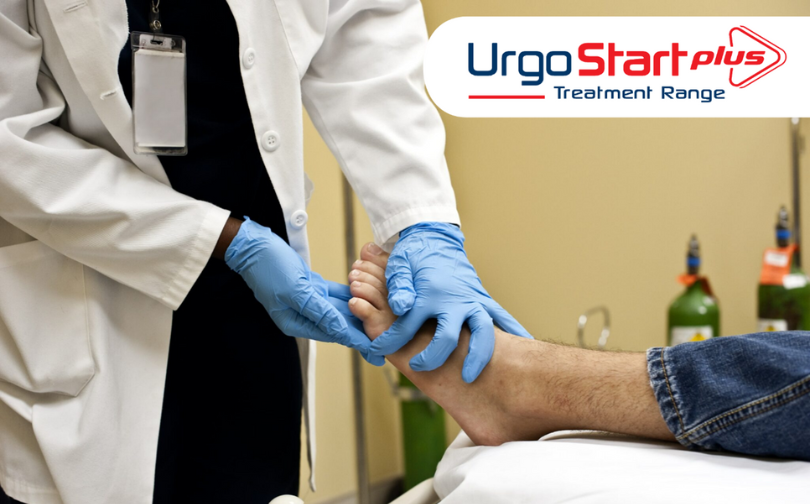Diabetic Foot Ulcers

Peoples living with diabetes have a risk of developing a wound or sore on their feet. These are more commonly found on the toes, balls of your foot and heels. As diabetes affects your nerves (neuropathy) and circulation (ischaemia), you might have loss of protective sensation and lack of circulation in your feet.
Check your feet regularly for ulcers, and be on the lookout for the following warning signs:
- Drainage or wetness in your sock
- Redness or swelling on your foot
- Skin blisters, thickened skin (callus), discoloration, dry cracked skin
- Cold, numbness or abnormal feelings in the feet
- Nail deformity, discolorations, or any lesions
- Claw toes, thickened tip toes, bunions, deformity in toe, foot or ankle
- Skin lesion between the toes
- Prominent bony area
- Red, blue or black discoloration, swelling, discharge, with or without pain
Being aware of these common signs can help you and your doctor treat ulcers quickly.
When it comes to diabetic foot ulcers, the best treatment is prevention. The sooner you can identify a potential problem and stop it from getting worse, the better the outcome will be. Here are a few things you can do to stop an ulcer from forming:
- Keep your blood sugar level in a healthy range
- Maintain a healthy diet
- Reduce high blood pressure
- Quit smoking
- Wash and dry feet daily
- Wear shoes both inside and outside – avoid open toed shoes. Contact your podiatrist to check if you need special shoes and/or insoles. Wear comfortable and protective shoes that offer sufficient support and minimise the impact on high-pressure areas of the foot
- Always wear socks and change them daily
- Have toenails maintained by a professional
- Use medical grade (Ph neutral) lubricants on dry feet NOT between the toes
- Wash feet with lukewarm water and Ph neutral soap – always pat dry and pay attention to properly drying between the toes
- Check shoes and socks. Shake out your shoes before putting them on. Make sure your socks aren’t bunched up
- Examine your feet daily
- Have a yearly foot exam by a diabetic foot specialist
The primary goal in the treatment of foot ulcers is to obtain healing as soon as possible. The faster the healing, the less chance for an infection.
If you have an ulcer or sore, do not attempt to self-medicate. Contact your diabetic foot specialist immediately.
There are several key factors in the appropriate treatment of a diabetic foot ulcer:
- Prevention of infection
- Taking the pressure off the area, called “off-loading.”
- Removing dead skin and tissue, called “debridement.” - No “bathroom surgery.” Never trim calluses or corns yourself, and don’t use over-the-counter medicated pads
- Applying medication or dressings to the ulcer. Moist ulcers heal quicker. Ask your healthcare professionals about dressings that help reduce healing time such as UrgoStart
- Managing blood glucose and other health problems
Avoid wound infection by:
- Keeping your blood glucose levels under tight control
- Keeping the ulcer clean and bandaged – ask you healthcare professional how to do a dressing without contaminating the wound
- Not getting the dressing wet
Content and information in this article are provided by Urgo Medical and are for informational purposes only. For any doubts, please consult a healthcare professional.


